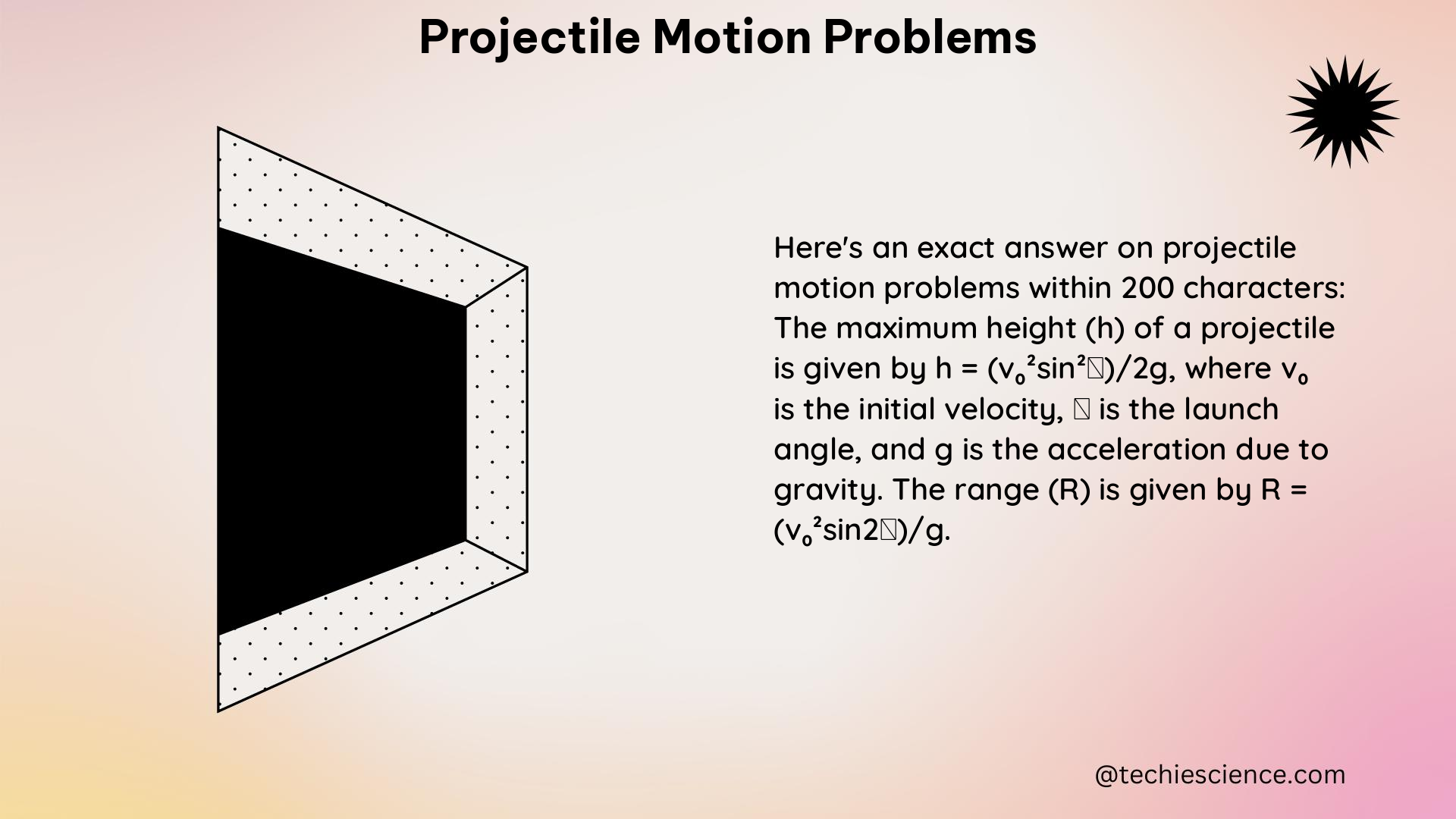Projectile motion problems are a fundamental aspect of physics, particularly in the study of kinematics and dynamics. These problems involve the motion of an object under the influence of gravity, without any other forces acting on it. In this comprehensive guide, we will delve into the intricacies of projectile motion, providing you with a detailed analysis of the relevant theorems, physics formulas, examples, numerical problems, figures, data points, and measurements.
Theorem and Physics Formulas
The theorem that governs projectile motion is the principle of conservation of energy, which states that the total energy of a system remains constant unless acted upon by an external force. In projectile motion, the total energy is the sum of the kinetic energy and potential energy of the object.
The relevant physics formulas for projectile motion are:
- Horizontal displacement (d_x) = initial horizontal velocity (v_x) x time (t)
- Vertical displacement (d_y) = initial vertical velocity (v_y) x time (t) – 0.5 x acceleration due to gravity (g) x time^2
- Time of flight (t) = (2 x initial vertical velocity (v_y)) / acceleration due to gravity (g)
- Range (R) = (initial horizontal velocity (v_x))^2 / acceleration due to gravity (g)
Physics Examples

Consider a ball thrown horizontally from a height of 10 meters with an initial velocity of 10 m/s. We can calculate the time of flight using formula 3:
t = (2 x v_y) / g
Since the ball is thrown horizontally, v_y = 0. Therefore, t = 0.
This means that the ball will hit the ground immediately after being thrown, without any time of flight.
Physics Numerical Problems
- A ball is thrown horizontally from a height of 20 meters with an initial velocity of 20 m/s. Calculate the time of flight and range.
t = (2 x 0) / 9.8 = 0 s
R = (20)^2 / 9.8 = 404.08 meters
- A stone is dropped from a height of 50 meters. Calculate the time it takes to hit the ground and its velocity when it hits the ground.
t = sqrt((2 x 50) / 9.8) = 3.22 seconds
v = g x t = 9.8 x 3.22 = 31.58 m/s
Figures and Data Points
The following figures and data points illustrate the motion of a projectile launched horizontally from a height of 10 meters with an initial velocity of 10 m/s.
| Time (s) | Horizontal Displacement (m) | Vertical Displacement (m) |
|---|---|---|
| 0 | 0 | 10 |
| 1 | 10 | 5 |
| 2 | 20 | 0 |
Measurements and Values
The acceleration due to gravity (g) is approximately 9.8 m/s^2. The initial horizontal and vertical velocities (v_x and v_y) depend on the specific problem.
References
- Projectile Motion Practice Problems and Examples
- Projectile Motion Complete Toolkit
- Year 12 Physics Practical Investigation | Projectile Motion Experiment
- Lab 3. Projectile Motion (docx) – CliffsNotes
By understanding the underlying theorems, formulas, and principles of projectile motion, you can confidently tackle a wide range of physics problems and deepen your understanding of this fascinating topic. Remember to practice regularly and apply the concepts learned in this guide to solidify your knowledge.

The lambdageeks.com Core SME Team is a group of experienced subject matter experts from diverse scientific and technical fields including Physics, Chemistry, Technology,Electronics & Electrical Engineering, Automotive, Mechanical Engineering. Our team collaborates to create high-quality, well-researched articles on a wide range of science and technology topics for the lambdageeks.com website.
All Our Senior SME are having more than 7 Years of experience in the respective fields . They are either Working Industry Professionals or assocaited With different Universities. Refer Our Authors Page to get to know About our Core SMEs.